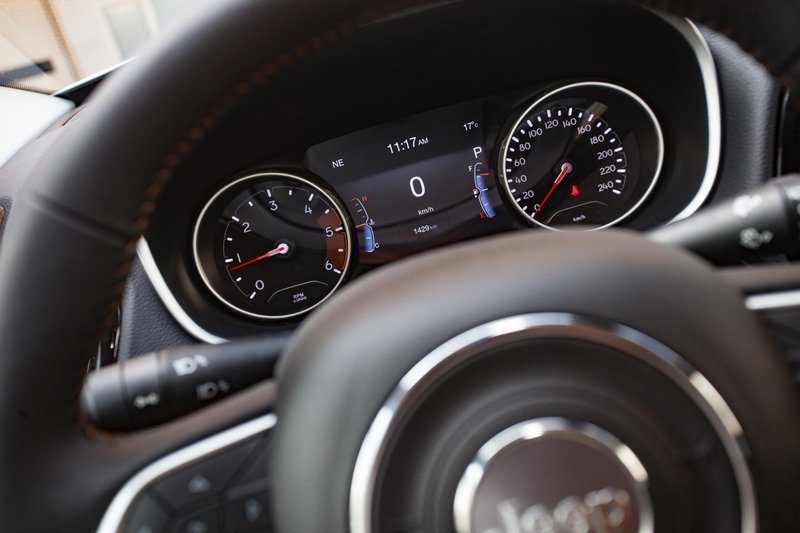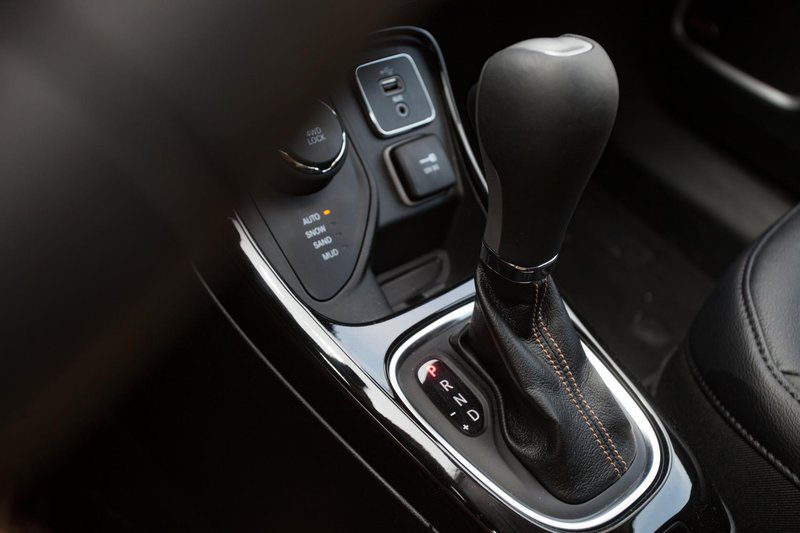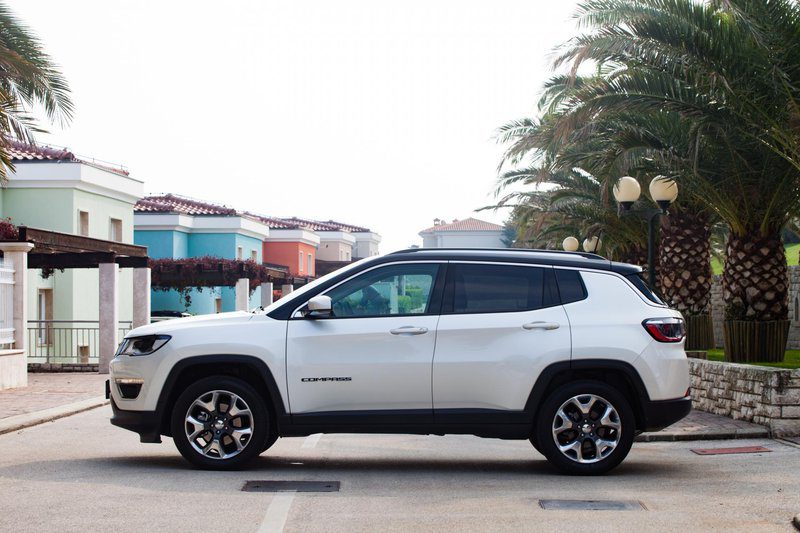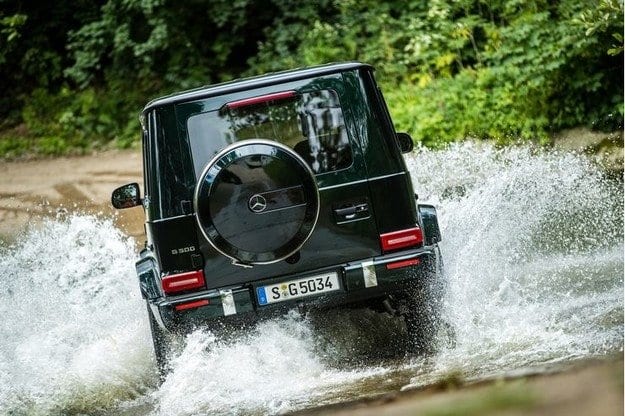
Test: Jeep Compass 2.0 Multijet 16v 140 AWD Limited
Content
If Jeep decided to flirt with sleeker SUVs with the first generation of the Compass, the new model is more geared towards crossover design. And as this segment drove customers around the world crazy today, it was clear that Jeep would also set its compass in that direction. But unlike brands that have no experience in this area, Jeep is an old cat in this area. Therefore, it was expected that in addition to the appearance, it would also provide content.

The Compass remains a classic Jeep on the outside, but it is clear that it found inspiration in the design of the most prestigious Grand Cherokee. The seven-slotted front grille is the hallmark of this American brand, and even the new Compass has not escaped this feature. Although it is based on the platform of the Renegade model, has a length of 4,4 meters and a wheelbase of 2.670 millimeters, it is much larger than its smaller brother, but interestingly, much smaller than its predecessor.

However, the new Compass offers more space inside, and the trunk has grown by a whopping 100 liters to 438. If the exterior is classic American, the interior already smells a little more like his Fiat daughter. Of course, the Limited version has more sophisticated materials and better plastics, but the design is quite restrained. The centerpiece is the Uconnect infotainment system, which provides all the information you need via an 8,4-inch touchscreen, but the interface is rather incomplete and confusing in terms of graphics. Another source of information is a seven-inch digital display located between the counters. We appreciate the ability to connect to smartphones via Apple CarPlay and Android Auto connectivity, which greatly improves the user experience using the center screen.

Compass is not only a technologically advanced and attractive design, it is the vanguard of a comfortable passenger compartment. There is enough space in all directions. It sits well in the back, even with the front seats pushed all the way back. The driver's seat is missing a few inches of seat, otherwise finding a good driving position won't be a problem. The ISOFIX anchorages are easily accessible and the seat belt buckles are conveniently "stowed" in the rear seat. There will be no problems with space and behind the back of the passenger. The black trunk was able to easily stow two folded SUPs during the test.
It also offers a lot in terms of safety and assistance systems: aids such as collision warning with braking function, radar cruise control, lane departure warning, blind spot warning, parking assist, rearview camera are available ...

Compass, as a representative of the SUV segment, is available with all-wheel drive, but it will show all its advantages over competitors only in the all-wheel drive version. The car in the test was exactly such that both faces could fully show. It was a weaker, 140-horsepower version of a XNUMX-liter turbodiesel with an automatic transmission, four-wheel drive and a set of equipment called Limited. This combination turns out to be a great compromise for daily mileage on the road and occasional off-road escapes.
Although the Compass is a perfectly normal, well balanced and reliable car on prepared tracks, it is sure to impress you in the field. Thanks to the advanced all-wheel drive, dubbed Jeep Active Drive, Compass can successfully overcome even the most difficult off-road obstacles. The system primarily sends power to the front wheels and can distribute torque to each wheel individually via a front clutch and a multi-plate wet clutch in the rear differential if needed. With the rotary knob on the center console, we can also control or set the drive programs (Auto, Snow, Sand, Mud), which then optimally tune the operation of the differential and engine electronics. Members of the old school of off-road vehicles have also been serviced as the Compass's AWD can be locked out. For this operation, it is enough to press the 4WD Lock switch at any speed.

The superb nine-speed automatic transmission delivers a smooth, smooth and undemanding ride. The 140 horsepower turbo diesel will easily follow the speed, but don't expect it to become a master on the passing lane. On a cold morning, there will be a little more noise and vibration at first, but soon the soundscape will become more bearable. You won't be overwhelmed by consumption either: on our standard lap, the Compass delivered 5,9 liters of fuel per 100 kilometers, while the total test consumption was 7,2 liters.
Let's touch on the price. As stated, the test model represents the second tier of the diesel offering and the best choice in terms of equipment. At the same time, all-wheel drive and almost the entire set of equipment are included in the final price, which is a little less than 36 thousand. Of course, it is necessary to check with the dealers whether this is the last offer, but we still think that Jeep is offering quite a car for the indicated amount.

Jeep Compass 2.0 Multijet 16v 140 AWD Limited
Basic data
| Sales: | Avto Triglav doo |
|---|---|
| Base model price: | 34.890 € |
| Test model cost: | 36.340 € |
| Power: | 103kW (140 KM) |
| Acceleration (0-100 km / h): | 9,9 with |
| Maximum speed: | 196 km / h |
| Mixed flow ECE: | 5,9l / 100km |
| Guarantee: | General warranty two years with no mileage limitation, 36 months paint warranty, Jeep 5 Plus extended no-surcharge warranty up to 5 years or 120.000 kilometers. |
| Systematic review | 20.000 km |
Cost (up to 100.000 km or five years)
| Regular services, works, materials: | 2.038 € |
|---|---|
| Fuel: | 7.387 € |
| Tires (1) | 1.288 € |
| Loss of value (within 5 years): | 11.068 € |
| Compulsory insurance: | 3.480 € |
| CASCO INSURANCE (+ B, K), AO, AO + | 6.960 ( |
| Calculate the cost of auto insurance | |
| Buy up | € 32.221 0,32 (km cost: XNUMX €) |
Technical information
| engine: | 4-cylinder - 4-stroke - in-line - turbodiesel - front mounted transversely - bore and stroke 83 x 90,4 mm - displacement 1.956 cm3 - compression 16,5:1 - maximum power 103 kW (140 hp) at 4.000 rpm – average piston speed at maximum power 12,1 m/s – specific power 52,7 kW/l (71,6 hp/l) – maximum torque 350 Nm at 1.750 rpm – 2 camshafts in the head - 4 valves per cylinder - common rail fuel injection - exhaust gas turbocharger - charge air cooler. |
|---|---|
| Energy transfer: | the engine drives all four wheels - 9-speed automatic transmission - gear ratio I. 4,713; II. 2,842; III. 1,909; IV. 1,382 hours; v. 1,000; VI. 0,808; VII. 0,699; VIII. 0,580; IX. 0,480 - differential 4,334 - rims 8,0 J × 18 - tires 225/55 R 18 H, rolling circle 1,97 m. |
| Capacity: | top speed 196 km/h – 0-100 km/h acceleration 9,9 s – average fuel consumption (ECE) 5,7 l/100 km, CO2 emissions 148 g/km. |
| Transportation and suspension: | SUV - 5 doors, 5 seats - self-supporting body - front single suspension, coil springs, three-spoke cross rails, stabilizer - rear multi-link axle, coil springs, stabilizer - front disc brakes (forced cooling), rear disc, ABS, rear electric parking brake wheels - a steering wheel with a gear rack, electric power steering, 2,9 turns between extreme points. |
| Mass: | empty vehicle 1.540 kg - permissible total weight 2.132 kg - permissible trailer weight with brake: 1.900 kg, without brake: 525 - permissible roof load: np |
| External dimensions: | top speed 196 km/h – 0-100 km/h acceleration 9,9 s – average fuel consumption (ECE) 5,7 l/100 km, CO2 emissions 148 g/km. |
| Inner dimensions: | longitudinal front 890-1.080 mm, rear 680-900 mm - front width 1.480 mm, rear 1.460 mm - head height front 910-980 mm, rear 940 mm - seat length front seat 510 mm, rear seat 530 mm - luggage compartment 438 l - handlebar diameter 380 mm - fuel tank 60 l. |
Our measurements
| T = 6 ° C / p = 1.028 mbar / rel. vl. = 56% / Tires: Bridgestone Dueller H / P 225/55 R 18 H / Odometer status: 1.997 km | |
| Acceleration 0-100km: | 10,3s |
|---|---|
| 402m from the city: | 17,3 years ( 143 km / h) |
| test consumption: | 7,2 l / 100km |
| Fuel consumption according to the standard scheme: | 5,9 l / 100km |
| Braking distance at 130 km / h: | 68,1m |
| Braking distance at 100 km / h: | 40,1m |
| AM table: | 40m |
| Noise at 90 km / h in 6rd gear | 59dB |
| Noise at 130 km / h in 6rd gear | 64dB |
| Test errors: | Without mistakes. |
Overall rating (326/420)
A solid four for a car that has completely changed between two generations. From a massive SUV, it has evolved into an everyday car that is characterized by spaciousness, excellent off-road capabilities and a wide range of equipment at a reasonable price.
Exterior (12/15)
Since Compass has completely changed its purpose, the design has also been built on a different principle. But we all agree that this is for the best.
Interior (98/140)
The design is a meager, but spatially rich interior. Even the selected materials do not disappoint.
Engine, transmission (52
/ 40)Excellent drive and good gearbox earn the most points.
Driving performance (56
/ 95)Neutral position in everyday driving and exceptional off-road capability.
Performance (27/35)
Although it was not the most powerful version, the performance is above average.
Security (35/45)
In the EuroNCAP test, the Compass earned five stars and is also well equipped with security systems.
Economy (46/50)
Competitive pricing and moderate fuel consumption are Compass's economic trump cards.
We praise and reproach
Roominess
Field objects
trunk
Usefulness
Price
UConnect system operation
Driver's seat too short

